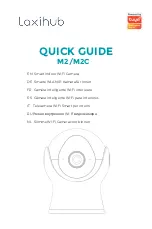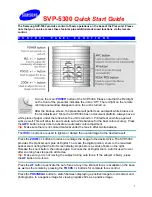
EL-2800M-USB / EL-2800C-USB
- 6 -
Before using USB 3.0 camera
EMVA 1288
With regard to signal to noise ratio in this manual, specifications measured by EMVA 1288 are used
together with specifications by a traditional measurement method.
EMVA 1288 is a more complete measurement that considers multiple noise sources, including
random noise, pattern noise, and shading. Additionally, EMVA 1288 incorporates temporal variances
in pixel output by capturing 100 frames of data and computing the RMS variations over the captured
frames. Because of the comprehensive nature of the noise analysis and the additional consideration
for RMS variances over time, EMVA 1288 SNR measurements are inherently lower than the traditional
SNR measurements given by manufacturers. However, the comprehensive nature combined with
rigid test parameters, means that all manufacturers are measuring their products equally and EMVA
1288 tested parameters can be compared among different manufacturers’ products.
In order to learn more about EMVA 1288, please visit http://www.emva.org
Interface
The EL-2800-USB employs a USB 3.0 interface and is in the process of being certified for compliance
with the USB3 Vision standard. USB3
Vision is a new standard interface for machine vision
applications being developed and managed by the AIA (Automated Imaging Association). USB3 Vision
uses USB 3.0 ports that will soon be standard on most PCs (with Windows 7 service pack and Windows
8 native support expected soon). Components from different manufacturers will easily communicate
with each other.
USB3
Vision also supports the GenICam
TM
standard which is managed by the EMVA (European Machine
Vision Association). The purpose of the GenICam standard is to provide a common program interface
for various machine vision cameras. By using GenICam, cameras from different manufacturers can
seamlessly connect in one platform.
The maximum transfer speed of USB 3.0 is specified at 5.0 Gbps, however effective bandwidth is
reduced by a number of factors including pixel format conversions and the physical interface
components used. The USB3 Vision standard specifies a bandwidth of 2.8 Gbps or greater. Maximum
cable length for passive cables is five meters, but this can be made longer using active cables.
As for the USB connector, EL-2800-USB uses a Micro B connector which complies with USB 3.0. This
connector has an additional 5-pin plug “stacked” on the side of a standard USB 2.0 Micro B
connector. However, USB 2.0 cannot be used with the EL-2800-USB.
Power supply
Although the USB 3.0 interface is capable of supporting both data and power, EL-2800-USB requires
both +5V and +12V. A separate power supply unit must be connected to the 12-pin connector for
pro12V.
Computer used for EL-2800-USB series
It is necessary to use a PC equipped with a USB 3.0 interface. It is also recommended to use a PC
equipped with slots of better than PC Express 2.0 x 8. Please note that the EL-2800-USB may not
work properly depending on the chipset used in the PC.









































